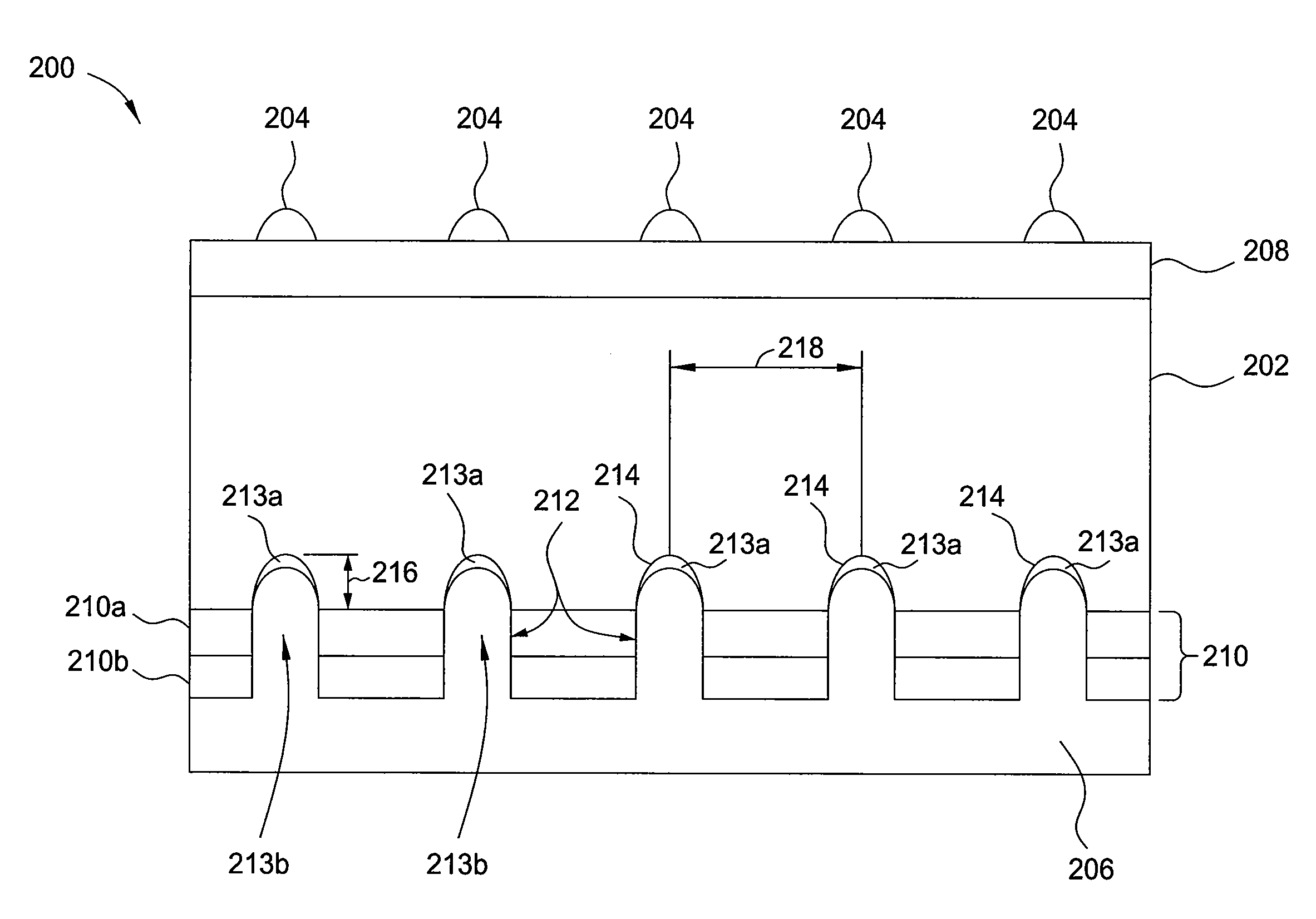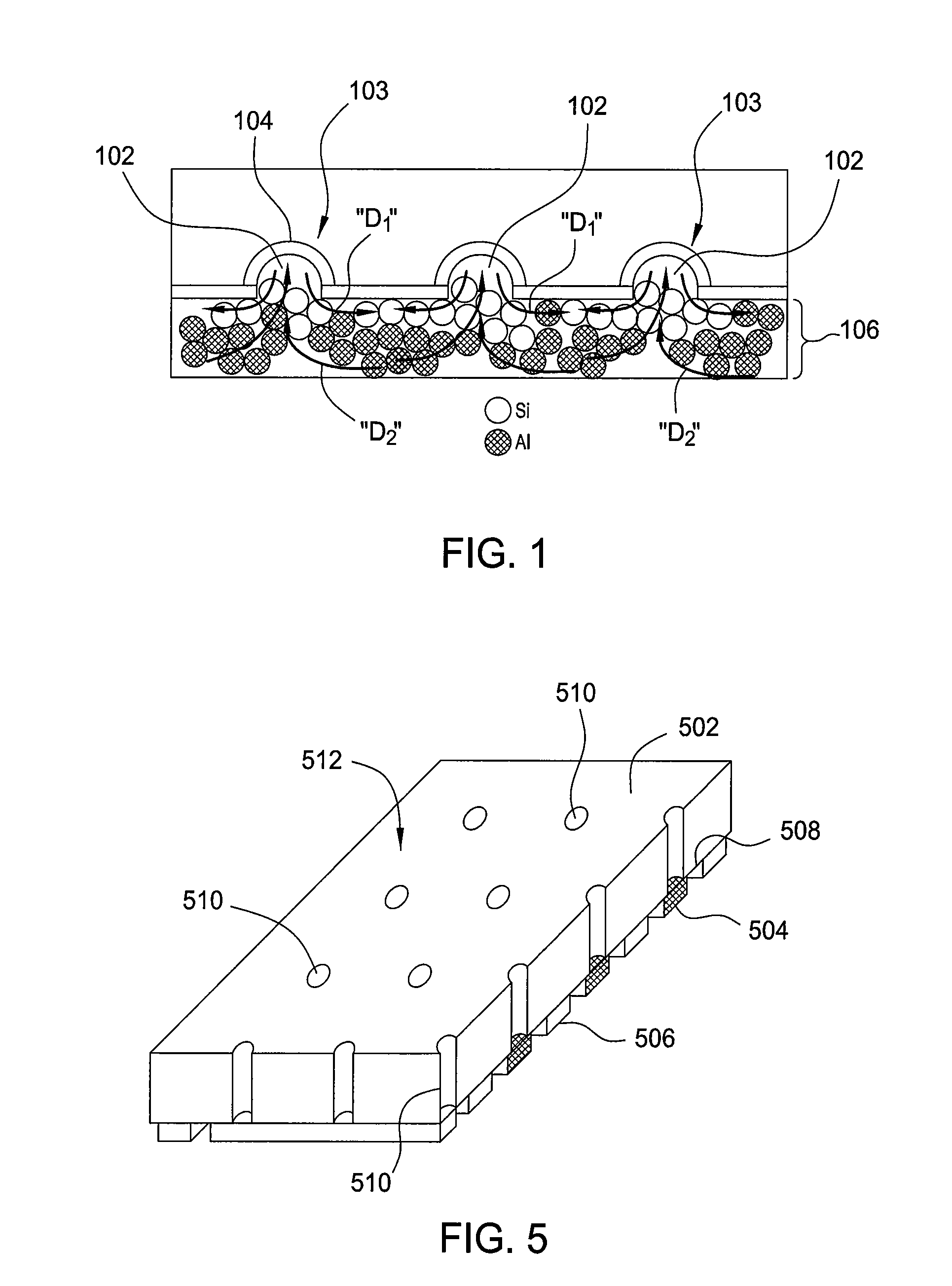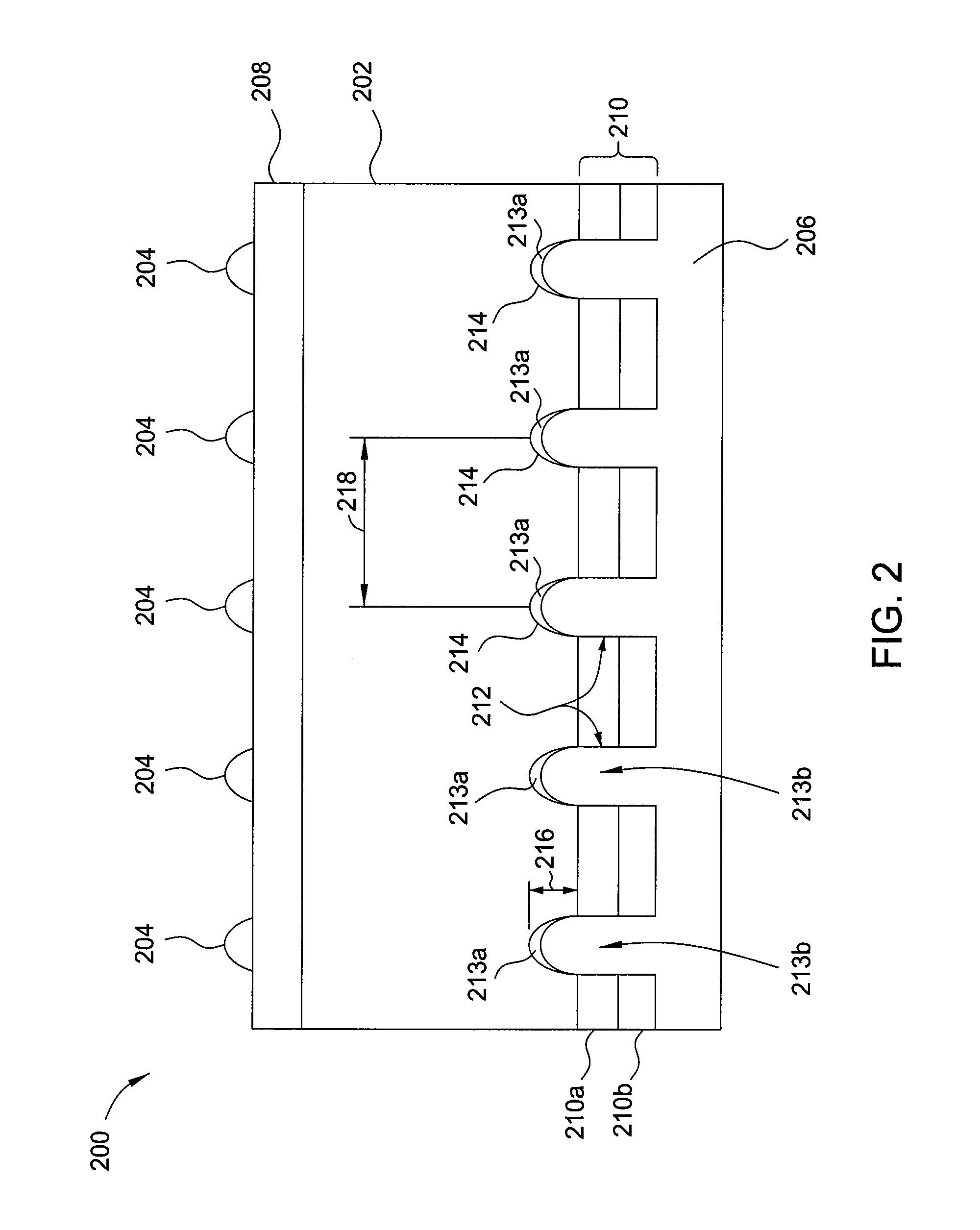Doped ai paste for local alloyed junction formation with low contact resistance
a technology of low contact resistance and alloyed junctions, which is applied in the field of solar cells, can solve the problems of lowering the conversion efficiency of solar cells, increasing contact resistance, and difficult to get good contact inside the contact openings of alloyed al, so as to reduce the cost-per-watt of solar cells, reduce recombination, and reduce the effect of recombination
- Summary
- Abstract
- Description
- Claims
- Application Information
AI Technical Summary
Benefits of technology
Problems solved by technology
Method used
Image
Examples
Embodiment Construction
[0022]Embodiments of the invention generally relate to methods for manufacturing solar cells. Particularly, embodiments of the invention provide methods of forming a more heavily doped back-surface field (BSF) by forming a metal paste doped with a Group III element on the back surface of the solar cell. The metal paste functions as a back surface contact for the solar cell and may be arranged in grid-like patterns. The grid-like patterned back surface contact reduces the cost-per-watt of the solar cell by using less material than a full-surface back contact. In one embodiment, methods of forming the solar cells include depositing a passivation layer stack including aluminum oxide (AlxOy) and silicon nitride (SixNy) on a back surface of a silicon substrate, and then forming contact openings through the passivation layer stack. A patterned aluminum paste doped with an element, such as boron, is then disposed on the passivation layer stack over the contact openings. Thereafter, the sub...
PUM
 Login to View More
Login to View More Abstract
Description
Claims
Application Information
 Login to View More
Login to View More - R&D
- Intellectual Property
- Life Sciences
- Materials
- Tech Scout
- Unparalleled Data Quality
- Higher Quality Content
- 60% Fewer Hallucinations
Browse by: Latest US Patents, China's latest patents, Technical Efficacy Thesaurus, Application Domain, Technology Topic, Popular Technical Reports.
© 2025 PatSnap. All rights reserved.Legal|Privacy policy|Modern Slavery Act Transparency Statement|Sitemap|About US| Contact US: help@patsnap.com



